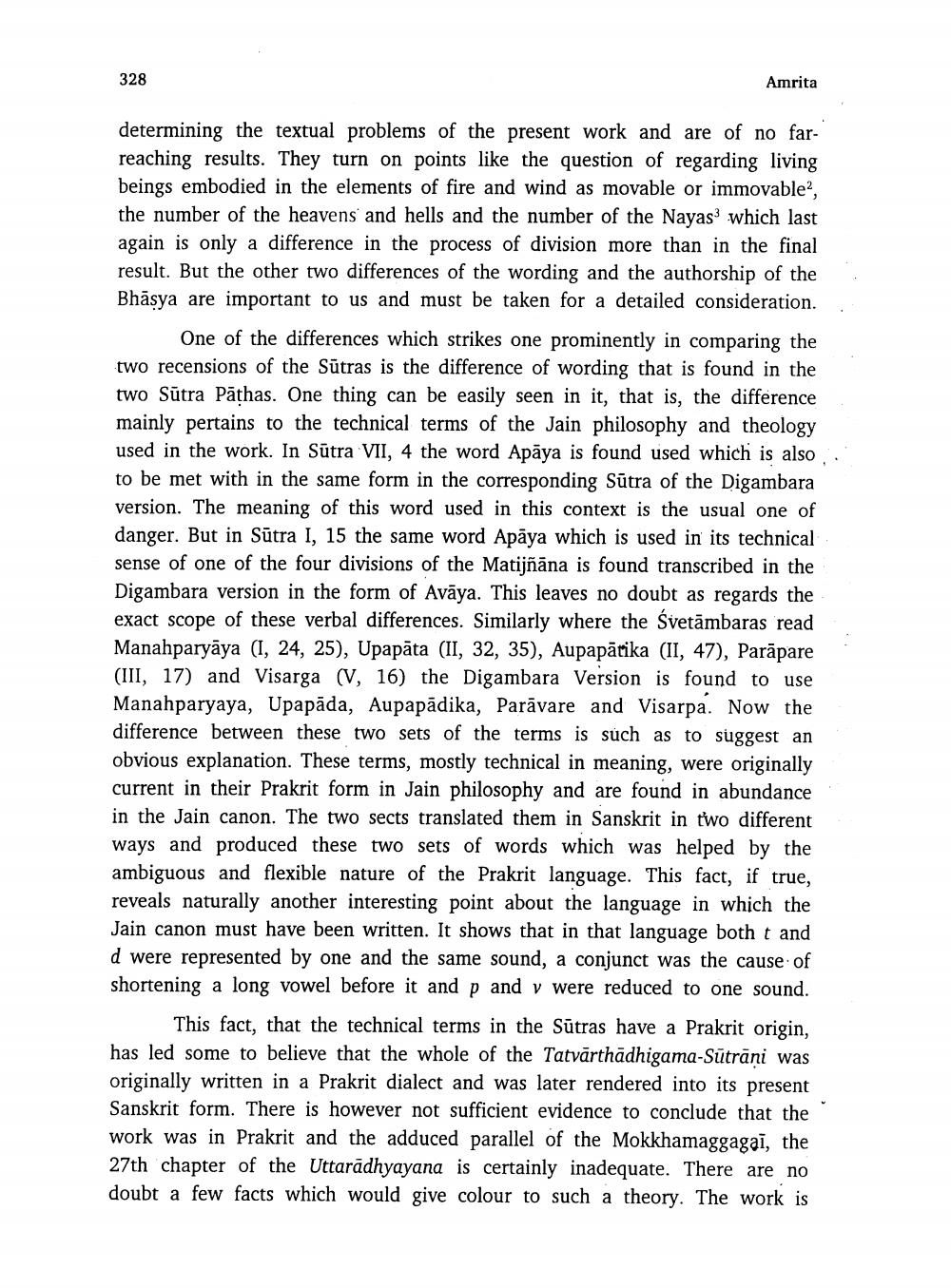________________
328
Amrita
determining the textual problems of the present work and are of no farreaching results. They turn on points like the question of regarding living beings embodied in the elements of fire and wind as movable or immovable, the number of the heavens and hells and the number of the Nayas which last again is only a difference in the process of division more than in the final result. But the other two differences of the wording and the authorship of the Bhāsya are important to us and must be taken for a detailed consideration.
One of the differences which strikes one prominently in comparing the two recensions of the Sūtras is the difference of wording that is found in the two Sūtra Pathas. One thing can be easily seen in it, that is, the difference mainly pertains to the technical terms of the Jain philosophy and theology used in the work. In Sūtra VII, 4 the word Apāya is found used which is also to be met with in the same form in the corresponding Sūtra of the Digambara version. The meaning of this word used in this context is the usual one of danger. But in Sūtra I, 15 the same word Apāya which is used in its technical sense of one of the four divisions of the Matijñāna is found transcribed in the Digambara version in the form of Avāya. This leaves no doubt as regards the exact scope of these verbal differences. Similarly where the svetāmbaras read Manahparyāya (I, 24, 25), Upapāta (II, 32, 35), Aupapātika (II, 47), Parāpare (III, 17) and Visarga (V, 16) the Digambara Version is found to use Manahparyaya, Upapāda, Aupapādika, Parāvare and Visarpa. Now the difference between these two sets of the terms is such as to suggest an obvious explanation. These terms, mostly technical in meaning, were originally current in their Prakrit form in Jain philosophy and are found in abundance in the Jain canon. The two sects translated them in Sanskrit in two different ways and produced these two sets of words which was helped by the ambiguous and flexible nature of the Prakrit language. This fact, if true, reveals naturally another interesting point about the language in which the Jain canon must have been written. It shows that in that language both t and d were represented by one and the same sound, a conjunct was the cause of shortening a long vowel before it and p and v were reduced to one sound.
This fact, that the technical terms in the Sūtras have a Prakrit origin, has led some to believe that the whole of the Tatvarthādhigama-Sūtrani was originally written in a Prakrit dialect and was later rendered into its present Sanskrit form. There is however not sufficient evidence to conclude that the work was in Prakrit and the adduced parallel of the Mokkhamaggagai, the 27th chapter of the Uttarādhyayana is certainly inadequate. There are no doubt a few facts which would give colour to such a theory. The work is




